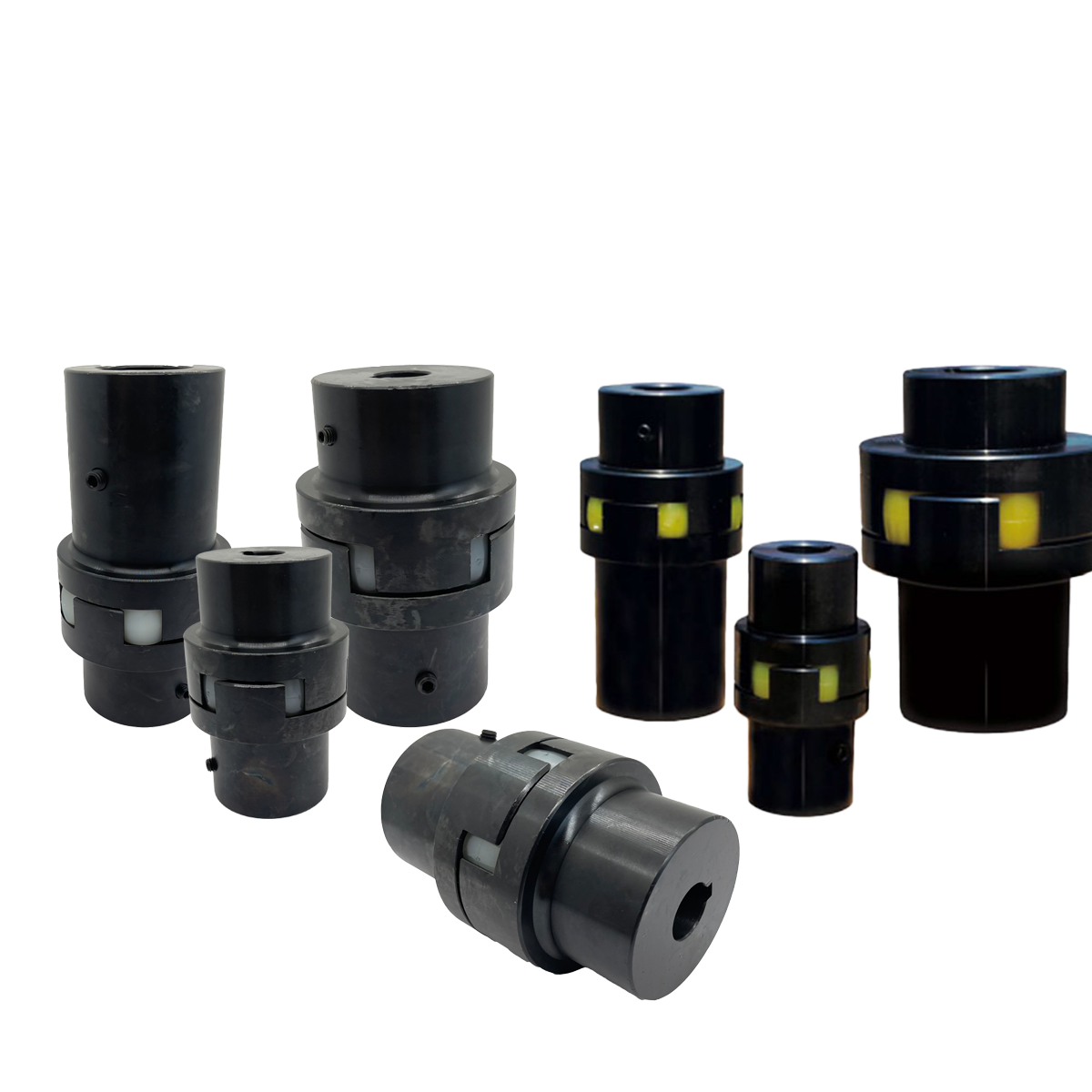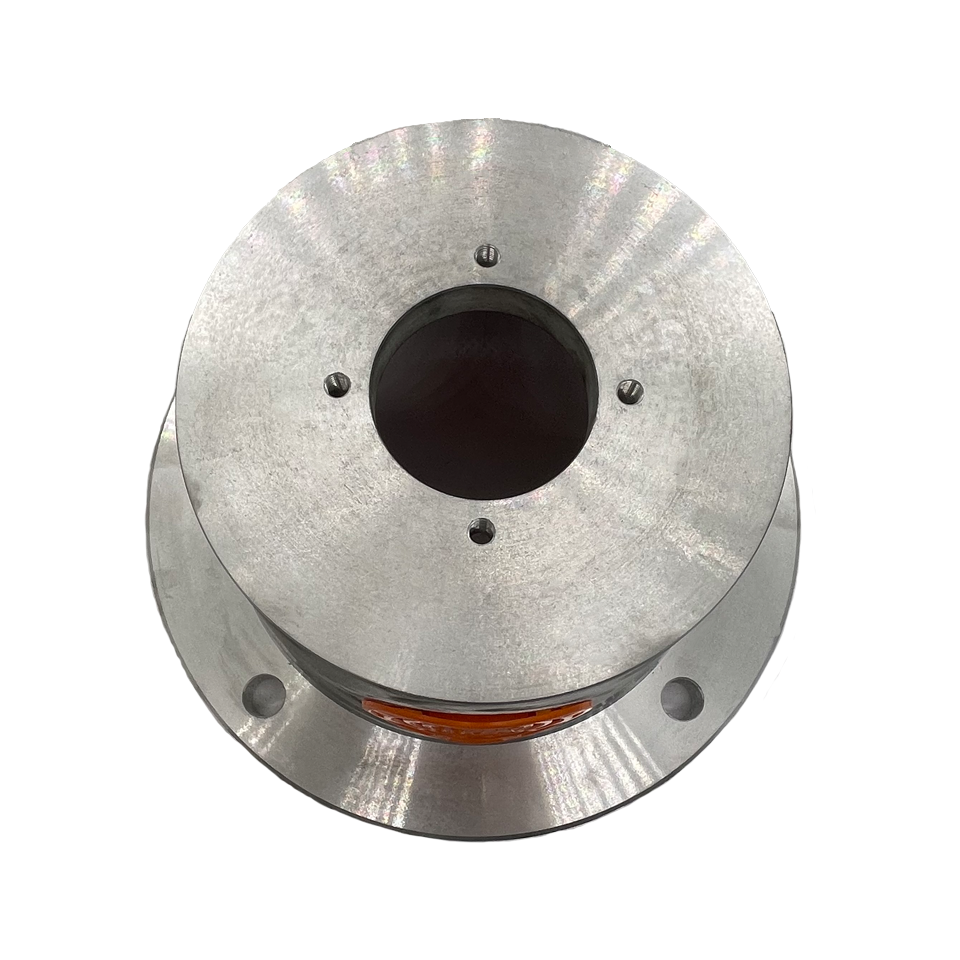A coupling is a mechanical device used to connect two shafts or other rotating parts in order to transmit power or motion from one to the other. Its primary function is to provide a reliable connection between components, ensuring that the rotation and torque generated by the drive mechanism are transferred to the driven machinery or equipment. Couplings can be used in a wide range of industries, including automotive, manufacturing, and power generation. There are various types of couplings, each designed for specific purposes, such as rigid, flexible, and fluid couplings. Rigid couplings are used when precise alignment is essential, and they do not allow for any movement or flexibility between the connected shafts. Flexible couplings, on the other hand, are designed to accommodate misalignment or slight shaft movements due to thermal expansion, vibration, or manufacturing tolerances. These are commonly used in machinery where shaft misalignment is unavoidable. Fluid couplings use hydraulic fluid to transfer torque and allow for slip between the connected shafts, providing a smooth power transfer and reducing the risk of mechanical shock. The choice of coupling type depends on several factors, such as the type of load, speed, misalignment tolerance, and shock absorption needs. Couplings are essential in many mechanical systems, and their selection plays a crucial role in maintaining the performance, efficiency, and lifespan of the equipment. Properly chosen couplings also reduce wear and tear on connected components, helping to prevent premature failure and extend the operational life of machines.
What Are the Different Types of Couplings?
There are several different types of couplings, each designed for specific applications and operating conditions. Rigid couplings are one of the most basic types and are used when the shafts being connected are precisely aligned. These couplings do not accommodate any misalignment and transmit torque directly between the shafts. They are often used in applications where shafts are perfectly aligned, such as in gearboxes or when connecting motors to pumps. Flexible couplings, in contrast, are designed to absorb misalignment between connected shafts. These couplings allow for slight angular, parallel, or axial misalignment, and are ideal for systems where misalignment can occur due to thermal expansion, vibration, or small inaccuracies in manufacturing. Types of flexible couplings include elastomeric, bellows, and jaw couplings. Elastomeric couplings use flexible elements made from rubber or elastomers, which help to dampen vibrations and reduce shock loads. Bellows couplings use a metal bellows to allow for angular, axial, and lateral misalignment while offering high torsional stiffness and low backlash. Jaw couplings have two hubs with a flexible elastomeric insert that fits between them, allowing for easy installation and accommodating moderate misalignment. Fluid couplings operate on the principle of hydraulic fluid being used to transmit torque between shafts, allowing for smooth power transfer and reducing the effects of shock load or mechanical stress. Fluid couplings are widely used in applications where variable speed control is required, such as in conveyors and automotive transmissions. Universal couplings or U-joints are commonly used in automotive and heavy equipment applications, where the angle between the shafts can change as the vehicle or machinery moves. The choice of coupling type depends on factors such as the amount of misalignment, the level of torque transfer required, and whether shock load or vibration damping is necessary.
What Is the Purpose of a Coupling?
The primary purpose of a coupling is to connect two rotating shafts or parts and transmit power or torque between them. By doing so, couplings enable the transfer of mechanical energy from one component to another, making them essential in the operation of motors, pumps, conveyors, and other machinery. In addition to transmitting power, couplings serve several other important functions, such as accommodating misalignment between connected shafts, compensating for axial, angular, or radial displacement, and providing vibration isolation. In many cases, couplings are designed to reduce the risk of damage to connected machinery by absorbing shock loads or dampening vibrations. For example, in systems with motors and pumps, couplings help ensure that any vibrations caused by motor rotation or pump operation do not get transmitted to other sensitive components, thus reducing wear and tear and extending the life of the equipment. Couplings can also provide flexibility by allowing slight movements or misalignments between parts without causing mechanical damage. In situations where the shafts are not perfectly aligned or where thermal expansion occurs, flexible couplings can help maintain the connection and prevent stress buildup. Another key function of some types of couplings, such as fluid couplings, is to provide smooth power transmission, enabling the gradual transfer of torque without sudden shocks or interruptions. By fulfilling these roles, couplings improve the efficiency, reliability, and longevity of mechanical systems, ensuring that machines and equipment perform optimally under various operating conditions.










